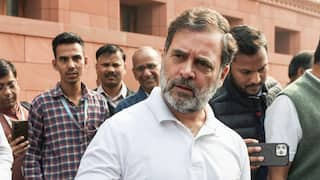Opinion | Not Just A Matter Of Statistics — Why India Needs A Caste Census And What After That

India, the world’s largest democracy, is a tapestry woven from countless threads of diversity. Our strength lies in our unity and in our ability to respect and embrace the multitude of communities that make up our nation. However, for too long, many of these communities have remained on the margins, their needs overlooked, and their voices unheard. The demand for a caste census is not just about counting numbers; it is about recognising and addressing the deep-seated inequalities that persist in our society. It is the first step towards true empowerment and inclusive growth for every Indian.
The last time India conducted a comprehensive caste census was in 1931. Since then, our society has undergone seismic shifts — economically, socially, and politically. Yet, the data we rely on to make crucial policy decisions is outdated and incomplete. How can we claim to address the needs of our people when we do not even have an accurate understanding of who they are and where they stand?
A caste census will provide us with the critical data needed to design policies that truly reflect the realities of modern India. It will allow us to identify, in clear terms, where the gaps are — whether in education, employment, or access to resources — and to tailor our efforts to bridge these gaps. For the Indian National Congress, this is not just a political exercise; it is a moral imperative. We owe it to every Indian to ensure that their potential is not limited by the circumstances of their birth.
Only The Beginning
But a caste census is only the beginning. The real challenge lies in how we use this data to effect meaningful change. One of the most pressing issues India faces today is the need for employment, education, and skill development that are accessible to all, regardless of caste or background.
In Singapore, for example, education and skill development are seen as lifelong processes, with the government providing continuous opportunities for learning and growth through initiatives like SkillsFuture. India, too, must adopt a similar approach, but with a focus on our unique socio-economic landscape.
Imagine a scenario where the data from the caste census reveals that certain communities are disproportionately underrepresented in higher education or in certain sectors of the economy. With this information, we can design targeted interventions — scholarships, vocational training programmes, and mentorship opportunities — that address these specific disparities. This approach not only levels the playing field but also prepares a more skilled workforce that can contribute to the economy.
India is at a critical juncture where we must decide how to harness our demographic dividend — the youngest population in the world with a median age of around 29 years. However, the reality of India’s employment landscape is stark. As of 2023, India’s unemployment rate stood at approximately 7.8%, with urban unemployment reaching as high as 9.4% at certain points during the year. This issue is particularly acute among the youth, where unemployment rates have often exceeded 20% in recent years.
The connection between the caste census and unemployment is direct. If we know where the educational and skill gaps lie, we can develop targeted employment programmes that not only provide jobs but also ensure that these jobs are meaningful and sustainable. For instance, if the census data shows that certain marginalised communities are predominantly engaged in low-skill, low-paying jobs, we can focus on upskilling these communities, thereby increasing their employability and income levels.
Furthermore, India is projected to add nearly 100 million working-age people to its population over the next decade. This influx will require the creation of millions of jobs, and more importantly, jobs that are aligned with the skills and aspirations of the youth. The caste census data can help identify which communities are most at risk of being left behind in this employment surge, and allow us to tailor policies that promote inclusive growth.
The caste census, therefore, is not an end in itself, but the beginning of a broader, more inclusive effort to ensure that every Indian has the tools they need to succeed. It is about acknowledging the reality of our society and taking concrete steps to address the challenges that our people face.
As we move forward, the Indian National Congress is committed to using the data from a caste census to guide our policies on education, skill development, employment, and social welfare. We believe that this is the only way to build a nation where everyone, regardless of caste or background, has the opportunity to thrive.
A Powerful Tool
A caste census is not just a matter of statistics. It is a powerful tool for social change, the first step towards a more equitable and just society. With this data in hand, we can work together to create an India where every citizen has the opportunity to reach their full potential, contributing to both their personal growth and the nation’s progress.
This is the vision that Rahul Gandhi and the Indian National Congress stand for — a vision of a truly inclusive India, where progress is shared by all, and where our demographic dividend becomes a force for prosperity rather than a challenge to overcome.
The writer is a member of the Indian National Congress.
[Disclaimer: The opinions, beliefs, and views expressed by the various authors and forum participants on this website are personal and do not reflect the opinions, beliefs, and views of ABP News Network Pvt Ltd.]


























